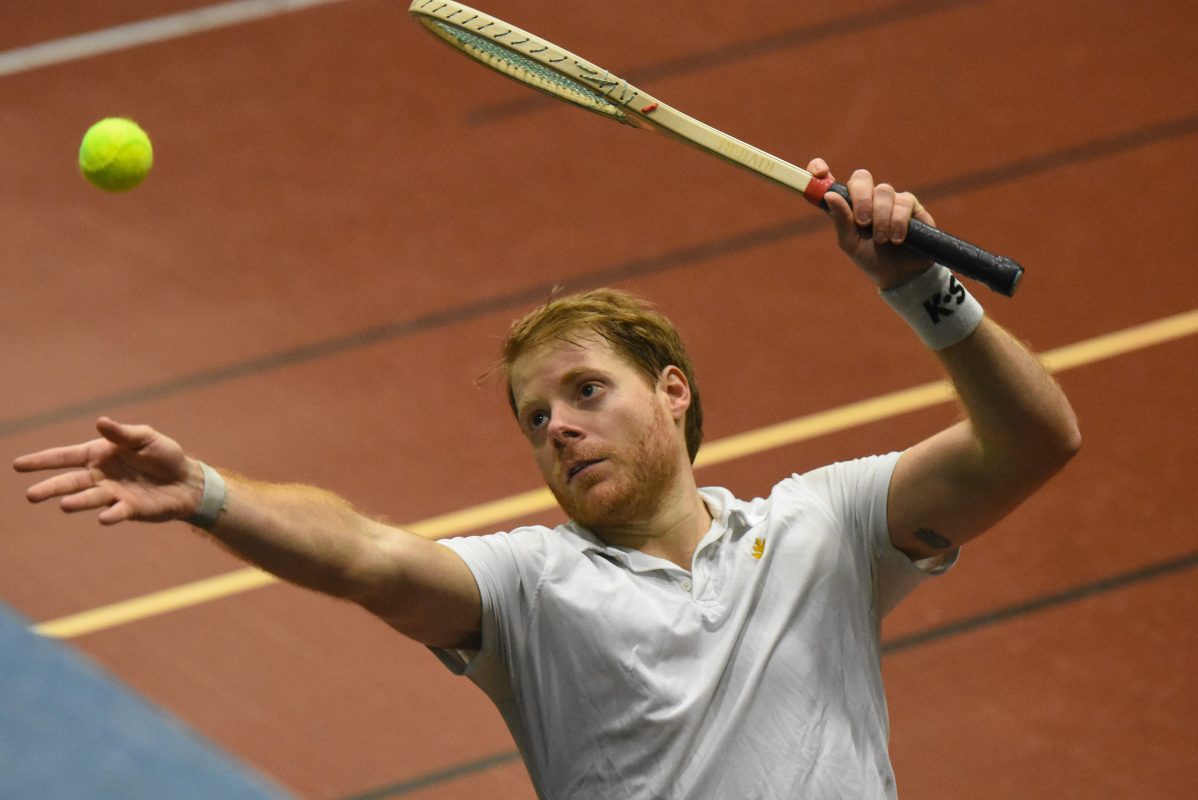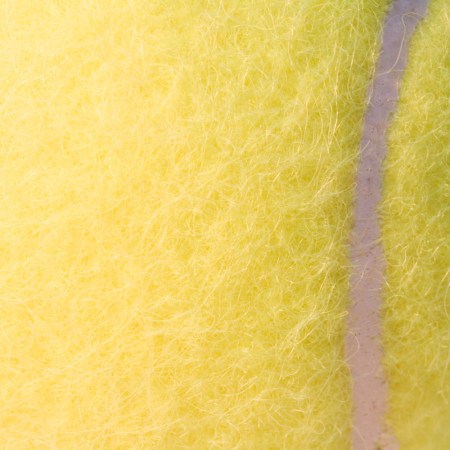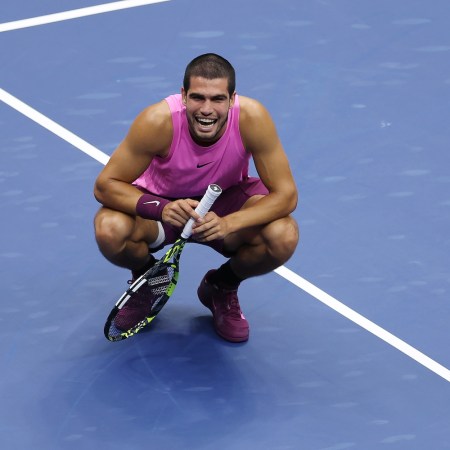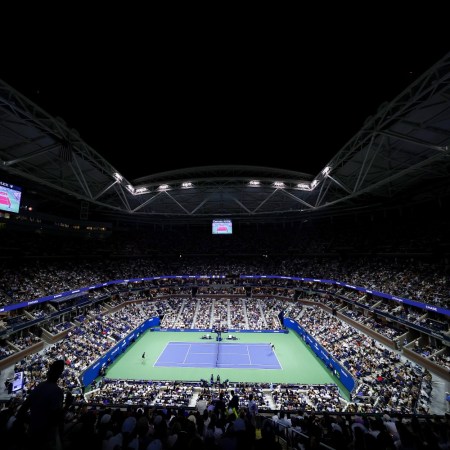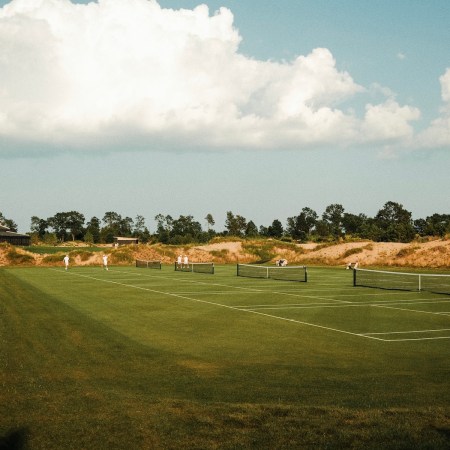Camden Riviere jokes that sometimes he’d like a little more recognition. “Obviously I and others have dedicated our lives to this, with the goal of being the best in the world, and anyone who says they wouldn’t like recognition for that isn’t being honest with themselves,” he says. “Of course, you’d like that pat on the back — and when I became world champion it was a bit of a shock because nothing much changed. It’s not like all of a sudden you’re making millions of dollars and sponsors are calling.”
That’s undoubtedly because Riviere, a native of Aiken, South Carolina, is a largely unsung American sporting hero in the world of court tennis, which, even more confusingly, is also known as real tennis. Before you wonder what’s not court-like or real about the kind played by the likes of Roger Federer or Serena Williams, court/real tennis is something very different, and considerably more esoteric.
Indeed, there are only 10 courts in the entire U.S. on which one can play the sport and all but one are on the East Coast. There are others in France, Ireland, Australia and the UK — where this September Riviere will compete in a COVID-delayed World Championship tournament — and some 20 new ones have been built over the last couple of decades, but that still amounts to just 43.
“There’s always one of two reactions when I tell people what I do,” says Riviere. “There’s ‘Cool, I know court tennis, I play that,’ and they’re always wrong because they think it’s just another term for normal tennis. Or they think I’m talking about racquetball or squash. You start to explain it and you can see it in their eyes when you start to lose them. Kept very simple, court tennis is essentially modern-day lawn tennis played in a box. You have a net, the ball can [typically] only bounce once, but you can hit it off the walls. But there’s a sloped roof along three sides of the court which is in play as well. I don’t go into the more detailed rules.“
That might be because, to the novice at least, they seem incredibly complicated — as when, for example, players are said to “lay a chase.” Because the ball — made from cork, upholstery tape, string and felt — is so hard and fast that players aren’t really expected to return every shot on the first bounce. So, at some stage in the game, the recipient of a shot will be given another chance to win the point by playing within the space prescribed by where the previous shot landed. That’s perfectly clear, right?
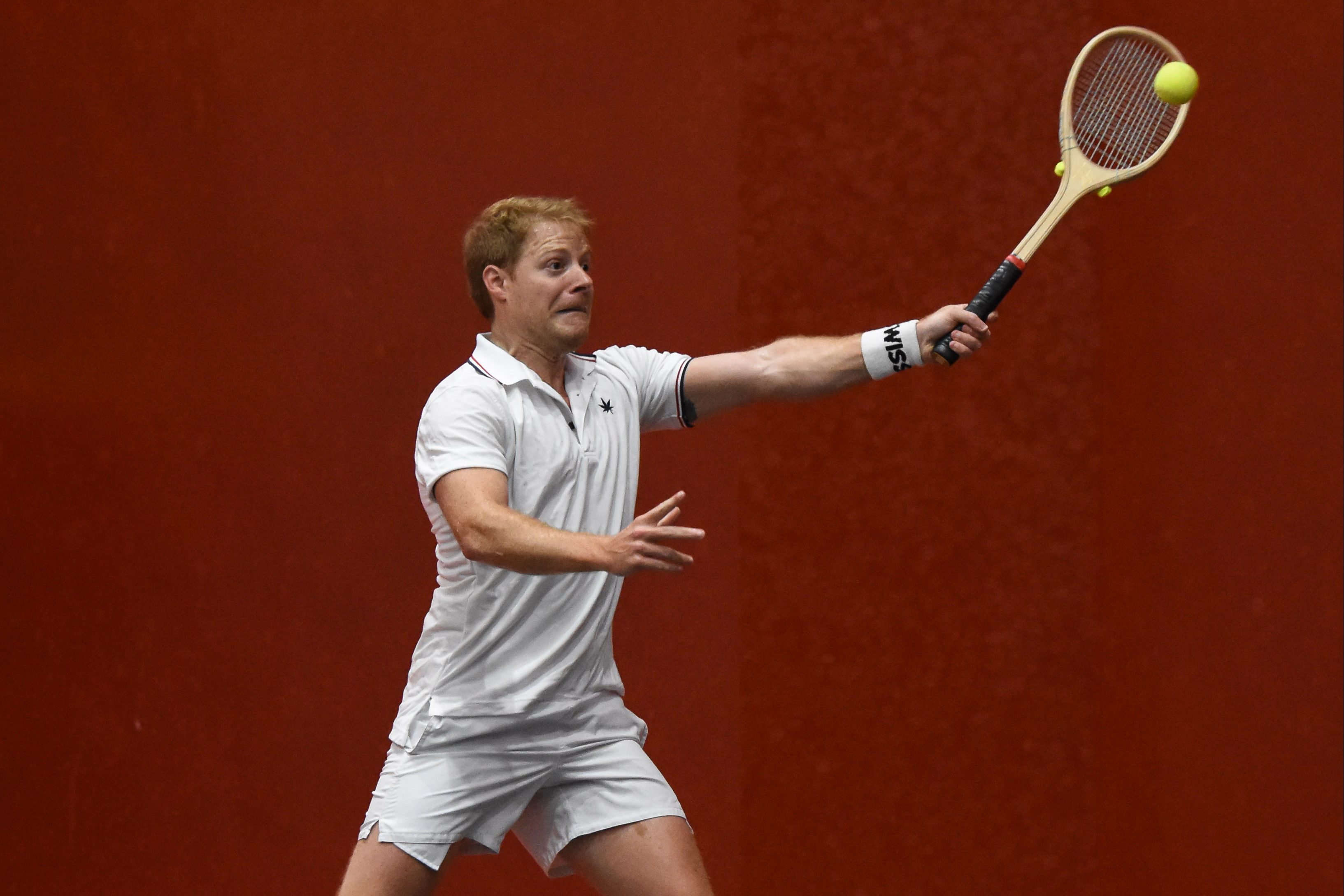
It’s why court tennis is often thought of as being chess played with a racket on a court that comes with its own dictionary of terms: the sloping roofs are called “penthouses,” the non-serving end (for service is only from one end in court tennis) is the “hazard” and an opening at the rear of the court, which can be played into like a goal, is the “dedans.” There are various kinds of serve — the bobble, pique, giraffe and poop among them — and the court is marked out in stages known by names the likes of “the door,” the “last gallery” and, best of all, “one yard worse than last.”
In court tennis’ defense, Riviere notes the rules are really no more arcane than the rules of cricket or of American football. “It’s just that those sports are [more prevalent] parts of our societies,” he says. “But you just want to give people the basics with court tennis so that it keeps them engaged. The worst thing you can do is over-explain.”
Too true. And yet all other racket sports — lawn tennis, badminton, squash — find their roots in court tennis. It dates to the 16th century and was created in France back in 1596 when there were said to be 250 courts in Paris alone. It was the original sport of kings too: Charles VII of France died from a head injury sustained walking onto a court. Henry II, V and VIII of England were all keen players, the latter warming up when he heard the news of the execution of his wife Anne Boleyn. That U.S. courts are mostly based on the East Coast somewhat plays to the stereotype of court tennis being a rather patrician, Ivy League affair.
“I think anyone who tries to deny court tennis’ history is out of their mind — it was the game of royalty, only men were allowed to play, it was elitist, upper class and that’s why, a hundred-plus years ago, these courts were built where they were,” Riviere concedes. “But we’ve been trying really hard to change that in recent times. It’s a niche sport with a passionate following but maybe the game doesn’t yet do enough to help itself. In the nicest way possible it’s been stuck in the past because of the desire to keep that fantastic history alive.”
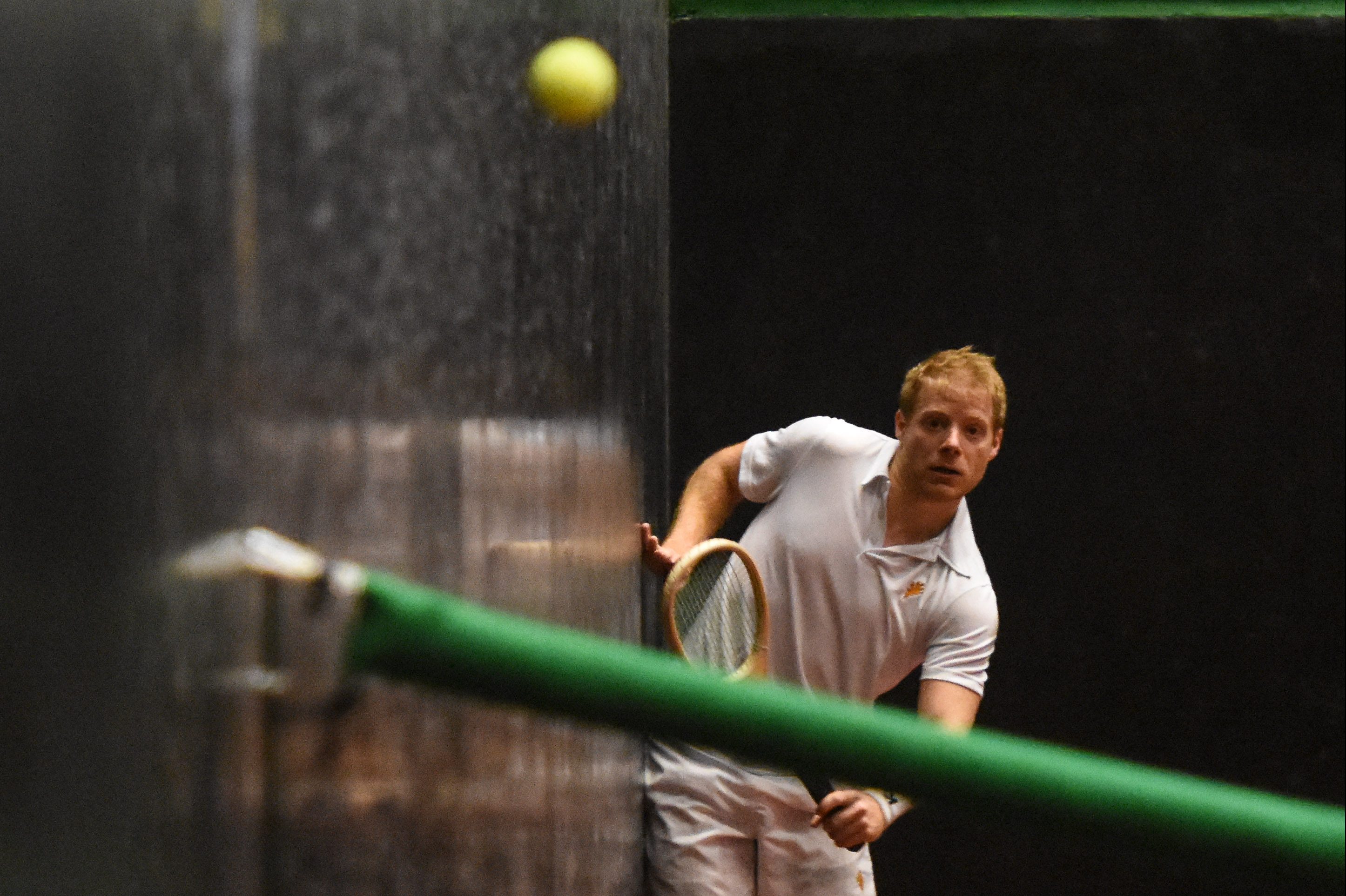
Riviere speaks, for example, of the rule that players must always wear all white (which lawn tennis also insisted on not so long ago and Wimbledon still does), of the high court fees and of the fact that only now is it looking at providing more affordable carbon-fiber rackets as alternatives to the hand-made wooden ones used by the professionals. The sport, he suggests, needs to make small concessions in the way lawn tennis has had to do too.
Yet these are not the only problems facing those seeking to get court tennis in front of more people: given the design of the court, there’s very little space for spectators — most of them tend to be other pro players — while the nature of the sport itself makes televising all angles nigh impossible. In recent years Riviere and his father — also a player — have raised the funds to have further courts built, with one in Charleston due for completion this year. But that’s not as simple as laying clay or lawn for a more traditional tennis court as a court tennis court is more akin to a serious architectural structure and just as expensive. “But I’d love to see us put the foot down now and try to really grow,” Riviere enthuses.
He, no doubt, will be a large part of that, not least because the sport’s other high-profile player and current World Champion — the UK’s Rob Fahey, the Nadal to Riviere’s Djokovic, whom he will face next month in yet another of their epic battles — is now 54 and set to retire. That will leave Riviere the main face of the sport. Perhaps too much so. He treads around the subject delicately and he isn’t counting his chickens. However, the pair have been so far ahead of their fellow pros that 35-year-old Riviere is concerned that once Fahey hangs up his white shorts, he will be left the too-dominant player.
“There’s a mutual respect between the two of us and it’s hard because you can’t have two people on top of the mountain. Rob has been there for so long, with me dominating in other tournaments around the world, it’s kind of become awkward, these two guys both half-sitting on the perch,” Riviere chuckles. “It’s frustrating at times when you’re not winning because this guy is still there but I appreciate that his being around has only made me a better player.”
That may well be proven over the coming weeks, as Riviere seeks to re-take the crown. He may be dealing with the challenge of a recent diagnosis of Lyme disease, but that doesn’t mean he can take it easy. He’s still training six hours a day. But, he stresses, for court tennis, he also has to get his head space right. ”You really have to ingrain every thought as to what you’ll do with each possible kind of shot, and there are many many kinds of shot,” he says. “Fitness is a given. You need to find a mental edge. But now I’m really just excited to get over there and get playing.”
The Charge will help you move better, think clearer and stay in the game longer. Subscribe to our wellness newsletter today.
